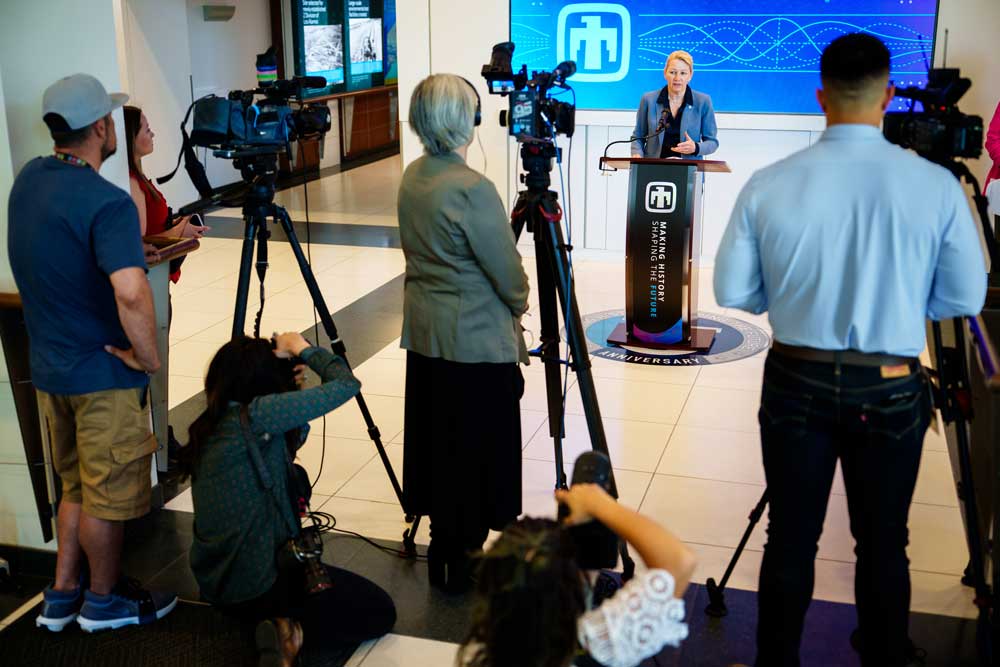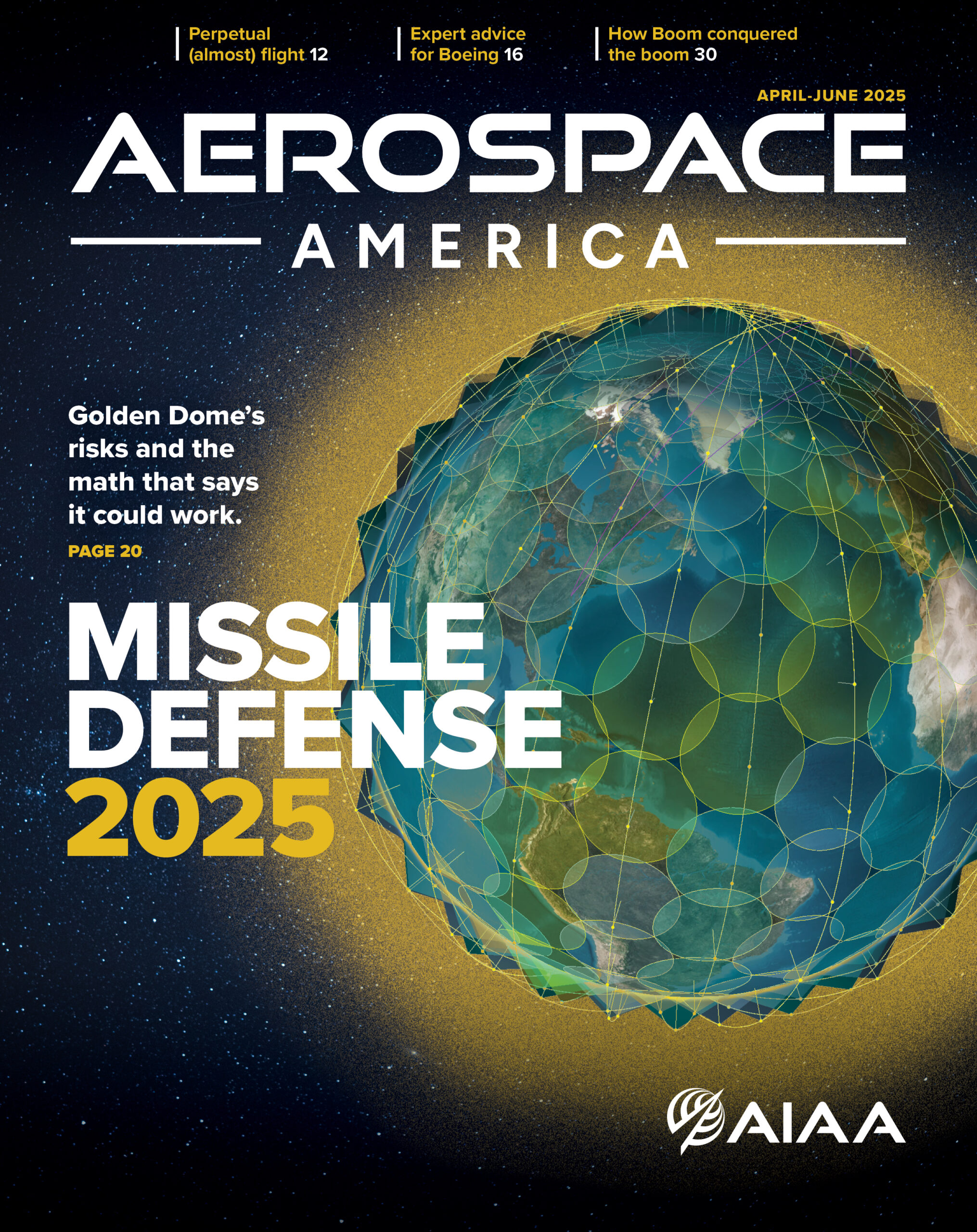Calls AI a “Manhattan Project Moment for Us”
On 14 May at Kirtland Air Force Base, Laura McGill, Sandia Labs’ 17th director, held her first press conference since her appointment to lead the world’s largest laboratory and engineering arm for America’s nuclear weapons enterprise.
“I’m just honored to be able to lead Sandia National Laboratories. It has such a rich legacy over 75 years with even more promise in the future,” began McGill, who described herself as “an engineering geek” at heart.
The AIAA Fellow most recently served as Sandia’s deputy director for nuclear deterrence, overseeing nuclear weapon modernization programs, and also spent four decades in industry, where she held senior engineering roles at Raytheon Missiles & Defense.
Digital Engineering and AI
McGill shared her vision for advancing the labs’ priority on nuclear deterrence with a focus on systems integration and digital engineering.

Emphasizing the important work in artificial intelligence (AI), McGill called it “a Manhattan Project moment for us,” reflecting a sentiment made by Energy Department Secretary Chris Wright on a visit to Los Alamos in March. “Sandia is really leaning into AI – it’s transforming our national security,” said McGill, pointing to work on developing world-class algorithms to accelerate science engineering as well as applying AI to improve business operations. McGill said Sandia was the first facility to roll out an isolated, internal generative AI tool to access secure information.
She called out microelectronics as a key Sandia capability spanning the full spectrum of research, design, development, manufacturing, packaging, testing, and qualification.
“We rely on our facilities like our foundry here on base, the Microsystems Engineering, Science and Applications (MESA) Complex, along with the Center for Integrated Nanotechnologies and our Counterfeit Detection Center,” she said, noting that MESA is the nation’s only source of trusted strategic, radiation-hardened microelectronics.
McGill said her team will continue to work with industry to assess commercially produced microelectronics and verify they are free of vulnerabilities.
$5 Billion in New Facilities
Sandia also plans to invest $5 billion over the coming decade in new construction projects, including a Power Sources Capability (PSC) Facility and a Combined Radiation Environments for Survivability Testing (CREST) Facility.
The facilities will ensure that new power sources and components used in nuclear security enterprise products work appropriately in remote and difficult environments, said Matthew Burger, Sandia Labs’ director of facilities and infrastructure program and strategic investments, who called the investments “the most significant construction efforts at Sandia’s New Mexico site in nearly 20 years.”
Wide-Ranging Q&A
During the Q&A, McGill expanded on Sandia’s AI investments in material sciences, explaining, “We’re using AI to help point us in the direction [RG1] of new materials that maybe haven’t been invented yet – new alloys and metals that have specific characteristics that support the nuclear deterrent.”
McGill elaborated on how Sandia Labs is using computer modeling, combined with historic underground testing data, to understand what happens in a nuclear detonation, with the goal of developing new materials able to withstand the nuclear environment.
She also reiterated the important collaboration Sandia has with universities around the country, and particularly with local institutions.
“We have a number of collaborative research programs that we do with universities,” said McGill, who noted that working with academic and lab partners like Los Alamos are key to Sandia’s ability to expand its expertise and do leading-edge research and development.
She also said the W80-4 nuclear warhead program is on track and wouldn’t be affected by cost overruns of the Air Force’s and Boeing’s modernization effort on the B-52 bomber, except possibly affecting timing of some of its final flight testing. The first production unit of the W80-4 is expected in fiscal year 2027.
Sandia received $5.1 billion in federal funding in FY24, with over 62% of the funds focused on nuclear deterrence. Some 62% of its 16,900 employees are engineers.
AIAA, which McGill served as president from 2022 to 2024, includes more than 100 Sandia employees as members. McGill continues to serve as chair of the AIAA Foundation.
Daniel Hastings, current president of AIAA, acknowledged his immediate predecessor’s leadership in guiding AIAA forward through the pandemic. “The example she set has enabled AIAA to become a more focused organization. She is bringing that same leadership skill to Sandia where her work is critical for national security,” he said.




